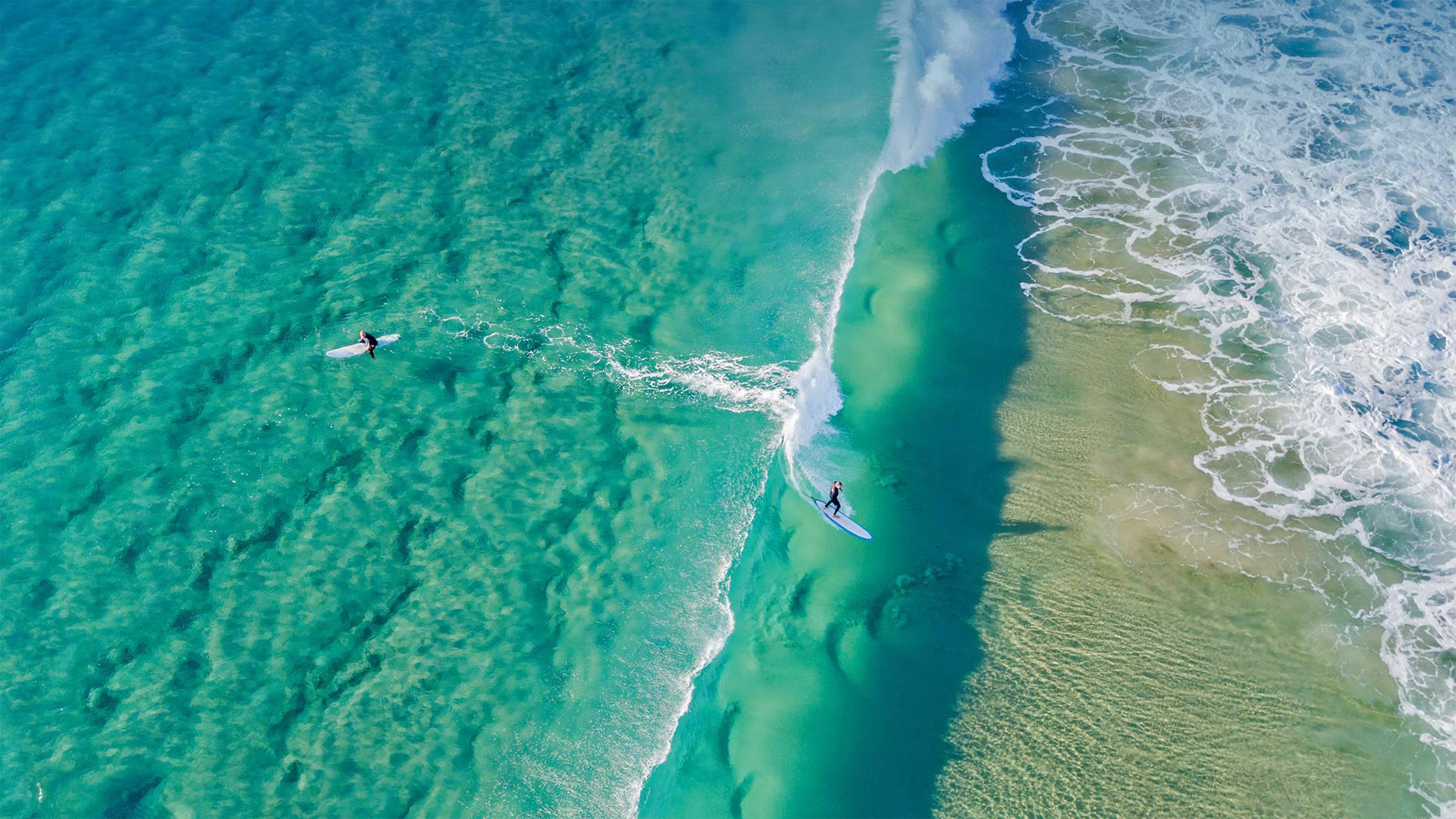黄金海岸上的冲浪者,澳大利亚 Surfers catching waves at Palm Beach on the Gold Coast, Queensland, Australia (© Darren Tierney/Getty Images)

黄金海岸上的冲浪者,澳大利亚 Surfers catching waves at Palm Beach on the Gold Coast, Queensland, Australia (© Darren Tierney/Getty Images)
这是什么水上魔法? What waterborne wizardry is this?
International Surfing Day
Of all the tricks humans have taught themselves, few delight and impress more than surfing. A sport, a pastime, an art, a philosophy of life, surfing is as close to magic as a person can perform on the untamed ocean. Today, the sport of wave riding gets its well-earned due with International Surfing Day, a time each year to honor the sport, the lifestyle of surfing, and the ocean itself, whose good health is vital to the sport and so much else. Surfers have a special connection to the ocean and the waves it produces. A surfable wave relies on so much: The winds hundreds or thousands of miles away that produced the energy to set the swells in motion—those swells might take days to arrive at the shoreline; and then the reef or point of land or underwater boulder upon which a swell will break into a perfectly shaped wave. Wind and timing are everything, and devoted surfers know the weather and the shore intimately.
Surfing can be done anywhere waves break, from Iceland to Ireland, Brazil to Senegal. But there are a handful of spots renowned for their waves, such as Hawaii, Tahiti, California, and the Gold Coast in Queensland, Australia, pictured here. As the sport has evolved, surfers have taken on bigger waves, giants that exceed 50 feet in height at now-famous surf breaks like Jaws, Mavericks, and the latest in Nazare, Portugal.
Surfing is believed to have originated in Polynesia more than 1,500 years ago, most likely in Tahiti and was observed by Westerners as early as the 1700s in Hawaii. Native Hawaiians are credited for creating the sport as we know it today. Duke Kahanamoku, Olympic swimmer, great waterman, and one of Hawaii's earliest celebrities, helped spread surfing's popularity to California and Australia in the early 1900s. Today, surfing is an Olympic sport, has a professional tour for both men and women, and is an integral part of popular culture. But for the lucky souls who know how to ride a wave, it's simply the best way to spend a day at the beach.
国际冲浪日
在人类自学的所有技巧中,很少有比冲浪更让人愉悦和印象深刻的了。冲浪是一项运动,一种消遣,一门艺术,一种人生哲学,就像一个人在未驯服的海洋上所能表演的一样,它离魔法很近。今天,冲浪运动因国际冲浪日而备受青睐,每年的国际冲浪日都是纪念这项运动、冲浪生活方式和海洋本身的日子,海洋本身的健康对这项运动和其他许多运动都至关重要。冲浪者与海洋及其产生的波浪有着特殊的联系。冲浪的波浪依赖于这么多:数百或数千英里以外的风产生的能量使涌浪运动,这些涌浪可能需要几天才能到达海岸线;然后是礁石或陆地或水下巨砾的点,在其上,涌浪将变成完美形状的波浪。风和时间是一切,热衷于冲浪的人对天气和海岸了如指掌。
从冰岛到爱尔兰,从巴西到塞内加尔,冲浪可以在任何波涛汹涌的地方进行。但也有一些以海浪闻名的景点,如夏威夷、塔希提、加利福尼亚和澳大利亚昆士兰的黄金海岸,如图所示。随着这项运动的发展,冲浪者们已经开始接受更大的海浪,在如今著名的冲浪休息处,身高超过50英尺的巨人,如大白鲨、小牛队,以及最近在葡萄牙的纳粹队。
据信,冲浪运动起源于1500多年前的波利尼西亚,最有可能发生在塔希提岛,早在17世纪,西方人就在夏威夷观察到了冲浪运动。据我们今天所知,夏威夷土著人创造了这项运动。20世纪初,奥林匹克游泳运动员、伟大的沃特曼、夏威夷最早的名人之一杜克·卡哈纳莫库(DukeKahanamoku)帮助将冲浪运动普及到加利福尼亚和澳大利亚。今天,冲浪是一项奥林匹克运动,男女都有专业的巡回赛,是流行文化的一个组成部分。但对于那些懂得乘风破浪的幸运儿来说,这是在海滩度过一天的最佳方式。
评论已关闭